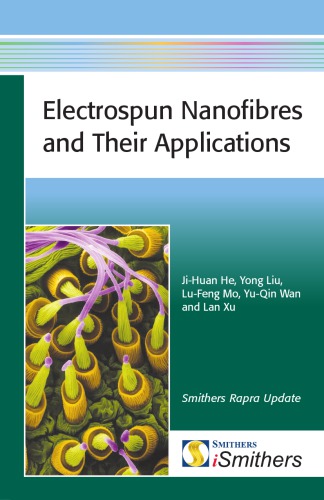

Most ebook files are in PDF format, so you can easily read them using various software such as Foxit Reader or directly on the Google Chrome browser.
Some ebook files are released by publishers in other formats such as .awz, .mobi, .epub, .fb2, etc. You may need to install specific software to read these formats on mobile/PC, such as Calibre.
Please read the tutorial at this link. https://ebooknice.com/page/post?id=faq
We offer FREE conversion to the popular formats you request; however, this may take some time. Therefore, right after payment, please email us, and we will try to provide the service as quickly as possible.
For some exceptional file formats or broken links (if any), please refrain from opening any disputes. Instead, email us first, and we will try to assist within a maximum of 6 hours.
EbookNice Team

Status:
Available4.3
15 reviews
ISBN 10: 184735145X
ISBN 13: 9781847351456
Author: Ji Huan He
Electrospinning is the cheapest and the most straightforward way to produce nanomaterials. Electrospun nanofibres are very important for the scientific and economic revival of developing countries. Electrospinning was developed from electrostatic spraying and now represents an attractive approach for polymer biomaterials processing, with the opportunity for control over morphology, porosity and composition using simple equipment. Because electrospinning is one of the few techniques to prepare long fibres of nano- to micrometre diameter, great progress has been made in recent years.
It is now possible to produce a low-cost, high-value, high-strength fibre from a biodegradable and renewable waste product for easing environmental concerns. For example, electrospun nanofibres can be used in wound dressings, filtration applications, bone tissue engineering, catalyst supports, non-woven fabrics, reinforced fibres, support for enzymes, drug delivery systems, fuel cells, conducting polymers and composites, photonics, medicine, pharmacy, fibre mats serving as reinforcing component in composite systems, and fibre templates for the preparation of functional nanotubes.
This book contains an array of colour diagrams, mathematical models, equations and detailed references. It will be invaluable to anyone who is interested in using this technique and also to those interested in finding out more about the subject.
electrospun fibers
electrospun nanofibers
electrospun nanofibers for biomedical applications
electrospun nanofibers principles technology and novel applications
electrospun nanofibres and their applications
electrospun nanofibers new concepts materials and applications
Tags: Ji Huan He, Electrospun, Nanofibres